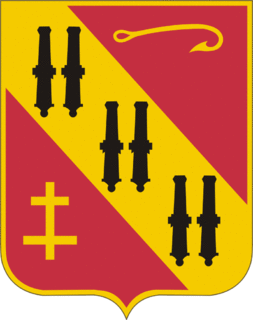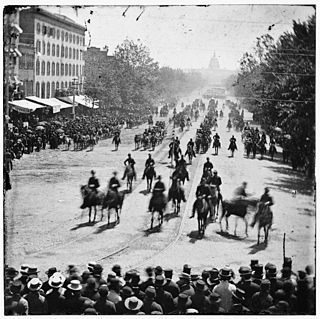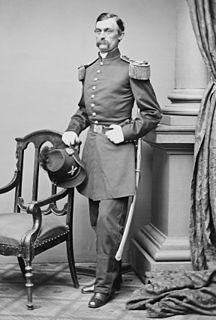Battery L, 1st Ohio Light Artillery was an artillery battery that served in the Union Army during the American Civil War.
6th Maine Battery was an artillery battery that served in the Union Army during the American Civil War.
Battery A, 1st New Jersey Light Artillery was an artillery battery that served in the Union Army during the American Civil War.
Battery B, 1st New Jersey Light Artillery was an artillery battery that served in the Union Army during the American Civil War.
Battery G, 1st New York Light Artillery was an artillery battery that served in the Union Army during the American Civil War.

Battery F, 1st Pennsylvania Light Artillery was a light artillery battery that served in the Union Army as part of the Pennsylvania Reserves infantry division during the American Civil War.
Battery "K" 4th Regiment of Artillery was a light artillery battery that served in the Union Army during the American Civil War.
Battery "I" 5th Regiment of Artillery was a light artillery battery that served in the Union Army during the American Civil War.
Battery L, 1st New York Light Artillery was an artillery battery that served in the Union Army during the American Civil War.
Battery "B", 4th Regiment of Artillery was a light artillery battery that served in the Union Army during the American Civil War.
Battery B, 1st Pennsylvania Light Artillery was a light artillery battery that served in the Union Army as part of the Pennsylvania Reserves infantry division during the American Civil War.
Battery "C" 4th Regiment of Artillery was a light artillery battery that served in the Union Army during the American Civil War.
Battery "A" 4th Regiment of Artillery was a light artillery battery that served in the Union Army during the American Civil War.
3rd New York Independent Light Artillery was an artillery battery that served in the Union Army during the American Civil War.
Battery "E" 1st Regiment of Artillery was a light artillery battery that served in the Union Army during the American Civil War.
Battery "G" 1st Regiment of Artillery was a light artillery battery that served in the Union Army during the American Civil War.
Battery "K" 5th Regiment of Artillery was a light artillery battery that served in the Union Army during the American Civil War.
Battery C, 1st New York Light Artillery was an artillery battery that served in the Union Army during the American Civil War.
5th New York Independent Light Artillery was an artillery battery that served in the Union Army during the American Civil War.
Battery "G" 4th Regiment of Artillery was a light artillery battery that served in the Union Army during the American Civil War.
The public domain consists of all the creative works to which no exclusive intellectual property rights apply. Those rights may have expired, been forfeited, expressly waived, or may be inapplicable.

Frederick Henry Dyer served as a drummer boy in the Union Army during the American Civil War. After the war, he wrote A Compendium of the War of the Rebellion – a complete record of every regiment formed under the Union Army, their histories, and the battles they fought in – taking forty years to compile.










